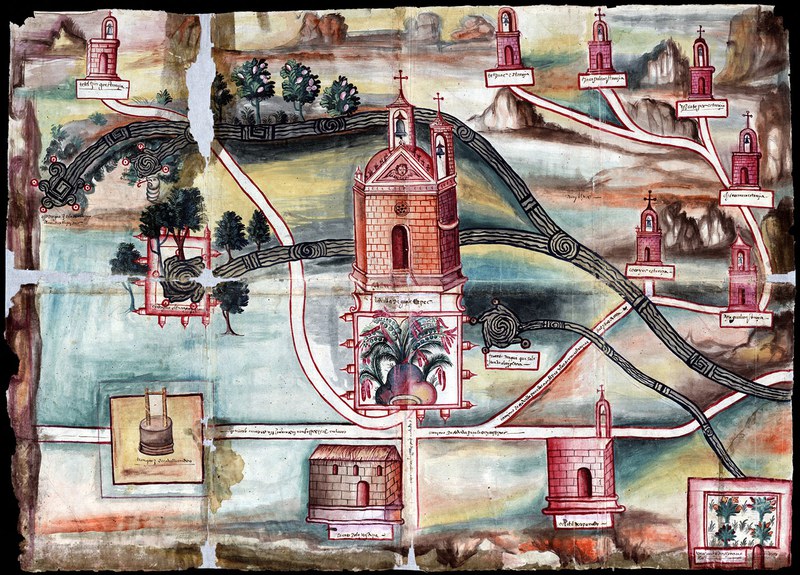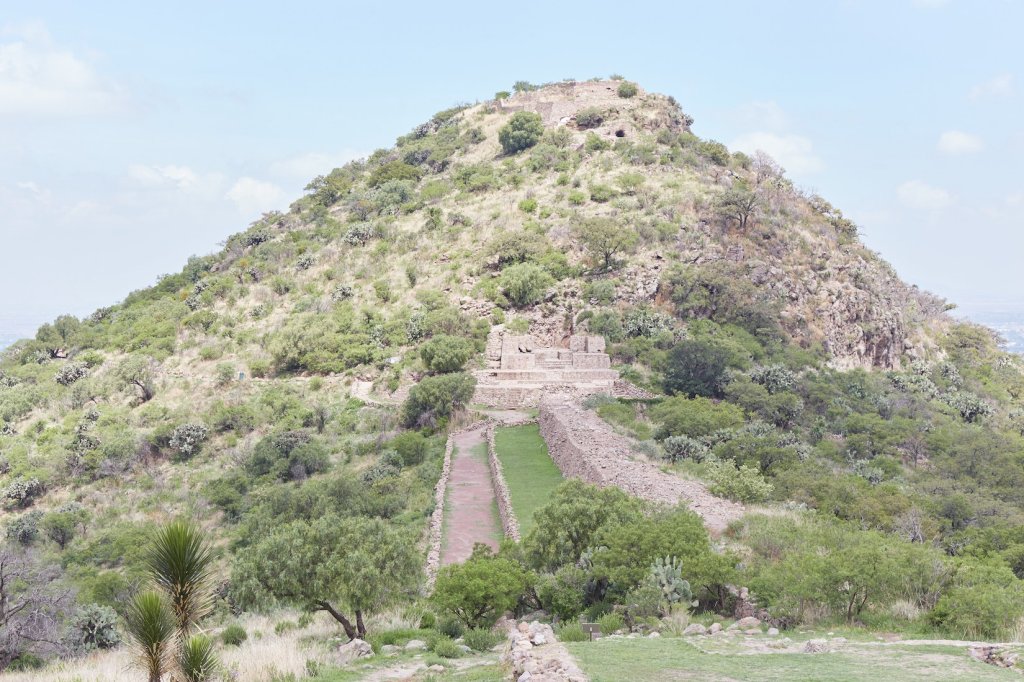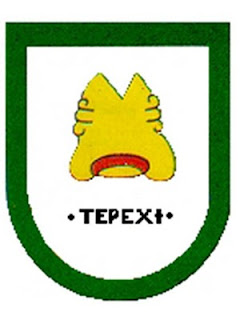One of the first written references to papaloquilitl is to be found in the work Historia natural de Nueva España (7 Volumes) penned by Francisco Hernández de Toledo circa 1570 AD



Published by the Instituto de Biología de la Universidad Nacional Autónoma de México
(Institute of Biology of the National Autonomous University of Mexico)
under the direction of Dr. Isaac Ochoterena, the Director of the Instituto de Biología.
Or you could just check out the scanned book available online at……….. https://www.biodiversitylibrary.org/item/246178#page/1/mode/1up
Now, to the author….
Francisco Hernández de Toledo (c. 1515 – 28 January 1587) was a naturalist and court physician to King Philip II of Spain. He was among the first wave of Spanish Renaissance physicians practicing according to the revived principles formulated by Hippocrates (1), Galen (2) and Avicenna (3).
- Hippocrates of Kos (c. 460 – c. 370 BC) was a Greek physician of the classical period who is considered one of the most outstanding figures in the history of medicine. The “Classical” period is the time between the Persian Wars at the beginning of the fifth century B.C. and the death of Alexander the Great in 323 B.C. Hippocrates is traditionally referred to as the “Father of Medicine” in recognition of his lasting contributions to the field, such as the use of prognosis and clinical observation, the systematic categorization of diseases, or the formulation of humoral theory. The Hippocratic school of medicine revolutionized ancient Greek medicine, establishing it as a discipline distinct from other fields with which it had traditionally been associated (theurgy and philosophy), thus establishing medicine as a profession
- Aelius Galenus or Claudius Galenus (September 129 – 216 AD), often called Galen or Galen of Pergamon, was a Roman Greek physician, surgeon and philosopher. Galen drew from the work of Aristotle and Hippocrates and based his medicine on a theory of humours. Considered to be one of the most accomplished of all medical researchers of antiquity, Galen influenced the development of various scientific disciplines, including anatomy, physiology, pathology, pharmacology, and neurology, as well as philosophy and logic.
- Ibn Sina (980 – June 1037 AD), commonly known in the West as Avicenna, was the preeminent philosopher and physician of the Muslim world, flourishing during the Islamic Golden Age, serving in the courts of various Iranian rulers. The Islamic Golden Age was a period of scientific, economic and cultural flourishing in the history of Islam, traditionally dated from the 8th century to the 13th century. He is often described as the father of early modern medicine
Hernandez was one of Spain’s most eminent doctors in the sixteenth century. From 1556 to 1560 Hernández served as a physician at the Hospital y Monasterio de Guadalupe in Extremadura, where he managed the botanical garden.
As the physician to King Philip II of Spain and surgeon-general of the Indies (protomedico de todas las Indias), Hernández was ordered to embark on the first scientific mission in the New World, a study of the region’s medicinal plants and animals.
He traveled for 7 years collecting and classifying specimens. Hernández describes over 3,000 Mexican plants, a feat that was significant because classical texts did not amass so much plant biodiversity. His writings include the first written account of vanilla.
During the seven-year research expedition in New Spain in the 1570s, Hernandez visited Oaxtepec.
Huaxtepec (Huastepec/Oaxtepec) was an important place for Mexican medicine before the coming of the Spanish. One of Moctezuma’s botanical gardens, renowned for its medicinal plants had been located in Oaxtepec. The tradition of Mesoamerican botanical gardens, with a rich history of herbal medicine, was still flourishing when Hernández landed in the Americas.

from Pintura de Huaxtepeque .., Ren Acuna edn (I985).
National General Archive (AGN), Mexico City.
The other garden that Hernandez visited was the garden of Tezcozinco (sic) (Tetzcotzinco/Texcotzingo), created by the famous philosopher/warrior/poet King, Nezahualcoyotl. Nezahualcoyotl (April 28, 1402 – June 4, 1472) was a scholar, tlamatini (philosopher), warrior, architect, poet and tlatoani (roughly translated as king) of the city-state of Texcoco in pre-Columbian era Mexico. Nezahualcoyotl was not fully Mexica (Aztec); his father’s people were the Acolhua and his mother was the sister of Chimalpopoca, the Mexica Huey Tlatoani (Great Speaker) of Tenochtitlan. Chimalpopoca was the 3rd Huey Tlatoani and was the son of the first Aztec Tlatoani Acamapichtli.

Granziera (2001) writes “Nothing amused Nezahualcoyotl more than the study of nature. He acquired a knowledge of astronomy by frequently observing the movements of stars. He devoted himself to the study of plants and animals, and being unable to have living specimens of many of the tropical species, for climatic reasons, had pictures of all the plants and animals of the Anahuac region painted from nature and copied on the walls of his palace. The famous physician Hernandez was eyewitness to these paintings, as he records in his Historia natural”



These Royal gardens were used to collect and display plant and animal specimens, aiming towards an encyclopaedic understanding of the flora and fauna of the whole of the Aztec empire, as well as the cultivation of medicinal and edible plants and trees.
Hernández’s work was published in 22 books in Latin. The first text of Hernández’s work, Index medicamentorum, was published in Mexico City. It is an index that lists Mexican plants according to therapeutic use and their traditional uses
In the winter of 1565 through 1576 Hernández made a copy of his work due to numerous commands by King Philip II. This would later be considered the second version of Natural History due to Hernández’s meticulous revisions and edits per the King’s request. This revised version of his manuscript contained 893 pages of text along with 2,071 pages of paintings of plants so as to relay the New World plants back to Europe
Many of Hernández’s original manuscripts were lost during the 1672 fire of the El Escorial monastery , located northwest of Madrid.
Today there is a fair amount of medicinal information to be found on the poreleafs. Some medicinal studies on the “Mother” of the poreleafs, Porophyllum ruderale, can be found at Porophyllum ruderale : A Medical Study. One variety in particular Quelite : Porophyllum scoparium is used medicinally at a specialist clinic in Mexico City. The doctors in this clinic do make the bold claim this variety (P.scoparium) is the ONLY porophyllum with medicinal utility (which is not even remotely true).
Porophyllums : Medicinal Utility : A Recap looks into the chemistry of some porophyllums and how these affect medicinal use and Essential Oil Properties looks at some specific phytochemicals and their medicinal actions.
Quite interestingly an earlier text Libellus de Medicinalibus Indorum Herbis, commonly known as the Badianus manuscript, which was scribed earlier (1552) refers to Hernández’ manuscript which wasn’t written until almost 100 years later. The reference though appears in an English translation of the text (Gates) which was printed originally in 1939 by the Maya society and released in English in 2000. Check out Papaloquelite : It’s History in Text
Now, let’s look at the varieties of papalo as described by Hernández.
MAZATLIPAPALOQUILITL or deer papaloquilitl
Deer papaloquilitl or deer weed/herb. This (deer) is a common moniker in many of the “common names” attributed to papalo and it is the second most commonly used name after papalo or papalotl=butterfly. Yerba/hierba de/del venado/ciervo are commonly used. See A Note on Deer Weed : The Danger of Common Names for more information on this aspect of papalos naming.
It is odorous, acrid and hot in nature, which is why they say that the crushed leaves spread on the body ward off the cold of intermittent fevers and the fevers themselves, causing sweat or evacuating (1) the cause in some other way; relieves cold stomach and flatulent diseases, as well as colic, iliac and uterine conditions.
- Evacuation = discharge, as of waste matter through the excretory passages, especially from the bowels : (usually) to pass urine or faeces from the body. This process can also happen through excessive drooling (as was often triggered through the internal use of mercury : See my Post Empacho which examines the internal use of mercury (usually in children) to address digestive issues. WARNING : Mercury is a toxic metal : DO NOT USE MERCURY MEDICINALLY (either externally or internally)
PAPALOXlHUITL or butterfly grass
Hernández was the first to note in his work of the herb PAPALOXlHUITL or butterfly grass (butterfly herb) that it has “leaves as if cut near the tip, shaped like a sickle or crescent, rounded, thin, soft and similar to butterfly wings, from which it got its name.” His description and translation is unique as it contains “xihuitl” which, according to the Nahuatl dictionary….xihuitl – Principal English Translation – “turquoise; herbs (sometimes psychedelic) and other greenish things, such as grass, greenstone”.
The work of Gates (1939) as published by the Maya Society notes of xihuitl “Xihuitl, (stem xiuh), means an herbaceous plant, also the non-woody part of a large tree or bush, the branches”. It notes the stem of the word xihuitl as being “xuih” which (back to my trusty Náhuatl dictionary) means “xiuh-. Principal English Translation – a prefix that refers to a blue-green colour, or something turquoise”.
So aside from Hernández’ description of the leaves as being “rounded, thin, soft and similar to butterfly wings” the Nahuatl XIHUITL also nicely describes the delicate colouring of papalo’s leaves and demonstrates a little of the comprehensive botanical naming system as utilised by Mesoamerica at the time.
The roots and leaves smell like cucumber, and seem to be of the same nature. It heals ulcers, mitigates inflammation of the lips and reduces excrescences (1).
- Excrescence – a distinct outgrowth on a body or plant, resulting from disease or abnormality; and when related to skin : 1. a projection or outgrowth especially when abnormal. i.e. warty excrescences in the colon. and 2. a disfiguring, extraneous, or unwanted mark or part : blot. Excrescences can also be internal. As an extreme case….Lambl’s excrescences, also known as valvular strands, are small, filiform, fibrous strands located on cardiac valves. These filiform strands can be an incidental finding or can be associated with severe complications like ischemic stroke, coronary embolism, pulmonary embolism, or valvular obstruction. These fronds occur at sites of valve closure. They originate as small thrombi on endocardial surfaces (where the valve margins contact) and have the potential to embolize to distant organs. Also SEEK MEDICAL ATTENTION if you have this condition.

Medicine at the time treated people according to “humours” and used various medicines (including diet) to balance these humours and effect good health. Humours were balanced using the elemental and heating or cooling natures inherent in the medicines/treatments. In a 1643 letter of Dr. Stafford of London to the younger Governor Winthrop of Connecticut we can see the nature of cucumber described medicinally. The letter contains “receipts” to cure twenty disorders (ranging from a series of urinary tract and bladder issues through to madness and the Kings evil – or tuberculosis) and 24 “botanic remedies” are given. The Galenic concept of humours is seen when Stafford prescribes for inflammation of the bladder or “heate of the urine.” He prescribes a “cold” remedy for the heat, recommending one of “The four great cold seeds” (from the cucumber, the gourd, the watermelon, or the melon), all fruits which are watery and “cool.” The expression “cool as a cucumber” is a Galenic holdover.
The four humors, or bodily fluids, thought to impact humans’ temperaments, personalities, and health were blood, phlegm, black bile, and yellow bile. Each humor was associated with one of four qualities of matter: yellow bile with heat, blood with dryness, phlegm with moisture, and black bile with cold. Imbalances between these humours were thought to be responsible for different moods and character traits – sanguine, phlegmatic, choleric and melancholic are all terms still in use today.
- Sanguine – optimistic or positive, especially in an apparently bad or difficult situation.
- Phlegmatic – (of a person) having an unemotional and stolidly calm disposition.
- Choleric – bad-tempered or irritable .
- Melancholic – feeling or expressing pensive sadness.
The humoral qualities of food and drink were influenced by several factors, which includes elemental affinities. Just as each humor has an associated element, different foodstuffs have humoral affinities due to their elemental qualities. Different herbs could be considered to be choleric or could make food or people choleric, as they are leafy and thus have an air affinity and so have a “warm” quality. At the same time, they are also plants and of the earth, and are therefore also considered “dry.” Using herbs would thus be able to balance out phlegmatic foods with wet and cold properties, such as cucumbers, lettuce, spinach, fish, pork, or veal.
The Greek doctor, philosopher and natural scientist Claudius Galenos (c. 129-199), also known as Galen of Pergamon. During his time Galen compiled all the available medical knowledge and added much of his own work. Galen utilized a large number of remedies (φάρμακον – phármakon) obtained from plants, minerals and animals. His work in the area of herbal medicine and his influence in medicine, philosophy and the natural sciences was so widespread and long lasting that herbal medicine preparations in general came to be known as galenicals and his very name was given to the Greek-Western medical system that lasted up to the nineteenth century, under the name of “Galenic medicine.”

For Interests sake.
- The five greater opening roots (“Opening” implies “opening obstructions,” especially of the kidneys): fennel, celery, asparagus, parsley, butcher’s broom.
- The five minor opening roots: Capparis, eryngium, couch grass, Omonis, madder.
- The five emollient herbs: marsh mallow, mallow, Mercurialis vel Beta, Parietaria, Violaria vel Mercurialis.
- The four major warm seeds: aniseed coriander, cumin, fennel.
- The four minor warm seeds: cretan arnmy, cardamom, celery, carrot.
- The four major cold seeds: cold and moist watermelon seed, cucumber seed squash seed, melon seed.
- The four minor cold seeds: cool and moist chicory endive, letluce, purslane.
- The four cordial flowers: rose, violet, borage, bugloss.
TEPEXIPAPALOTZIN or butterfly of the rocks
The crushed leaves taken with water, or cooked, cure empacho. It’s third degree hot and a little humid.
See my Post Empacho for the curanderos take on digestive disfunction and how it is addressed using curanderismo (1). Glossary of Terms used in Herbal Medicine. goes into more detail about empacho and other medical conditions unique to curanderismo (such as susto, espanto, envidia and others)
Could this plant be Quelite : Tepepapaloquilitl? This herb is named in a similar manner (tepetl – mountain, hill : papalotl – butterfly : quilitl – weed). This herb is also a butterfly herb of the rocks (tepetl – mountain, hill : papalotl – butterfly : quilitl – weed) – although the Náhuatl word for rock is tetl, or perhaps the word texcalli (1) is more relevant as it refers to an environment in which the herb could grow (rather than just a “rock” or piece of stone itself)
- texcalli. Principal English Translation: stone, rock, crag


Alternatively, perhaps a more exact location is being pinned down when naming this herb.
Tepexi or Tepeji.- This word comes from the Nahuatl dialect Tetl; stone, hill, and pexic; split, cut, dictions that together form the name Tepexic, which was given by the Toltecs and means, “broken or steep rock or broken hill,” which translates as cliff. Another meaning is, in the “ravine place” and a third meaning, “place of precipices”. It was a border between Mixtecs and Nahuas.
Papalotzin = papalotl (butterfly) and -tzin : Principal English Translation: reverential suffix for nouns, also sometimes diminutive. So “small butterfly” or the “reverential” aspect of -tzin might refer to an ancient butterfly “God” of the air which is usually referenced by the Monarch butterfly. This also backs up one theory as to the naming of Pápaloquelite as being a herb that comes from “above, where the butterflies are” and may refer to the mountainous lands where the Monarch butterflies migrate to in México. See Papaloquelite : What’s in a name?

ZACAPAPALOQUILITL or vegetable and butterfly grass (verdura y pasto de mariposas)
It is cold and humid in nature, and provides the aid that is characteristic of it in any way it is applied.
I have briefly investigated this herb already. See Unknown Porophyllum : Zacapapaloquilitl.
To recap a little (check out the Post for more info)

De Zacapapaloquilitl, seu olere, et pabulo papilionum. Radice firmatur surculosa, ex qua fundit caules tenues, virides, ac binas spithamas longos, folia admodum exilia, longaque, flores cyaneos, refertos pilis candidis, et in pappos demum abeuntibus. Frigida et humida natura constat, et quocumque modo applicetur, similes effectus praestat. Nascitur in calidis, seu planta sint, seu montosa loca.
Of Zacapapaloquitl, that is, to smell sweet and the food of butterflies. It is established by a sylvan root (1), from which it spreads thin, green stems, with two long spans, very slender leaves, and long, sky-flowers (2), packed with white hair, and at length departing into pappus. It is composed of cold and moist nature, and, in whatever way it is applied, produces a similar effect. It grows in hot climates, whether it be plants, or mountainous places.
- sylvan • \SILL-vun\ • adjective. 1 a : living or located in the woods or forest b : of, relating to, or characteristic of the woods or forest
- the Latin flores cyaneos translates as “sky flowers” although when taken separately flores = flowers and cyaneos = sky-blue. So from Latin to Spanish to English there seems to be translation issues (it makes me wonder how this affected the translation of the Christian Bible)
For more detailed medicinal information on the other porophyllums check out…..
- Quelite : Quillquina : Porophyllum ruderale
- Quelite : Pápaloquelite : Porophyllum macrocephalum
- Quelite : Chepiche/Pipicha : Porophyllum tagetoides
- Quelite : Porophyllum gracile : Deer Weed
- Quelite : Porophyllum lanceolatum
- Quelite : Porophyllum obscurum
- Quelite : Porophyllum pausodynum
- Quelite : Porophyllum punctatum
- Quelite : Tepepapaloquilitl
- Quelite : Tlapanche
- Porophyllum amplexicaule
- Porophyllum filiforme
- Porophyllum fruticulosum
- Porophyllum leucospermum
- Porophyllum nummularium
- Ayauhtona. Another Poreleaf?
- Papaloquelite : Chaoacocopin
- Pipitzcaquilitl : Porophyllum obtusifolium?
- Tlatlaolton. Which Porophyllum Are You?
- Yerba Porosa : (Unknown Porophyllum)
- Unknown Porophyllum : Zacapapaloquilitl.
References
- Codex de la Cruz-Badiano (Badianus Manuscript) Libellus de Medicinalibus Indorum Herbis (“Little Book of the Medicinal Herbs of the Indians”) (also called the Codex Barberini) Nahuatl original composed in the Colegio de Santa Cruz de Tlatelolco in 1552 by Martín de la Cruz and translated into Latin by Juan Badiano
- Flores Olvera, Hilda. Ma. (1943) Historia de las Plantas de la Nueva España de Francisco Hernández, edición 1942-1946 por el Instituto de Biología. (History of the Plants of New Spain by Francisco Hernández, edition 1942-1946 by the Institute of Biology.) Publicación del el Instituto de Biología de la Universidad Nacional Autónoma de México, y bajo la Dirección del Dr. Isaac Ochoterena, Director del mismo Instituto : IMPRENTA UNIVERSITARIA MÉXICO, 1943
- Patrizia Granziera (2001). Concept of the Garden in Pre-Hispanic Mexico. Garden History, 29(2), 185–213. doi:10.2307/1587370
- Hernández, Francisco (1959 – 84) Historia natural de Nueva España. 7 Volumes. Universidad Nacional Autónoma de México, México, D.F. Reprint of the work originally published in 1651 in a folio edition and later (1790) published in Madrid in a 3-volume edition with Latinversions of the botanical names.
- E. Kremers, “American Pharmaceutical Documents, 1643 to 1780,” Badger Pharmacist, no. 15 (1937). The original 1643 letter of Dr. Stafford is in the Boston Medical Library Collections, Countway Library
- Sharma R, Sciacca F, Carroll D, Lambl’s excrescence. Reference article, Radiopaedia.org (Accessed on 02 Nov 2023) https://doi.org/10.53347/rID-56687
- Simon Varey and Rafael Chabrán (1994). Medical Natural History in the Renaissance: The Strange Case of Francisco Hernández. Huntington Library Quarterly, 57(2), 124–151. doi:10.2307/3817754
Websites
Images
- Image – Nova Plantarum – By Hernández, Francisco, 1517-1587; Recchi, Nardo Antonio – John Carter Brown Library, Public Domain, https://commons.wikimedia.org/w/index.php?curid=72190794
- Image – Map of Guaxtepec, 1580. Benson Latin American Collection, LLILAS Benson Latin American Studies and Collections, The University of Texas at Austin. Accessed July 15, 2021.

